On a recent Friday at the San Ysidro Port of Entry, the modern, well-lit pedestrian crossing bustled with travelers on their way from Tijuana into San Diego. As they waited in line for a border officer to inspect their passports or other documents, another line began forming in a separate part of the building. This one was for asylum-seekers.
Seeking Asylum at the California Border: In the Basement Cells at San Ysidro Port of Entry
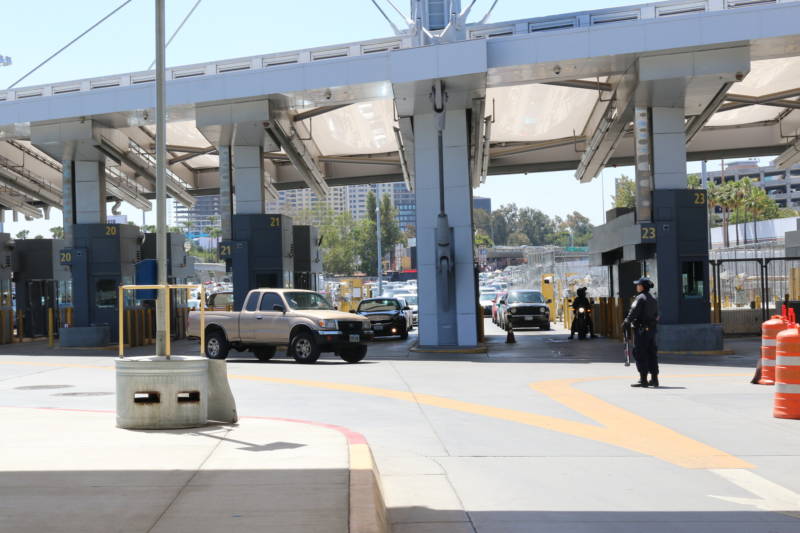
In this room, hidden from the routine flow of traffic, men, women and small children from Africa, the Caribbean and Central America stood in silence — single file, with their hands behind their backs. They waited for an officer to take them down several flights of stairs to the port basement, where they would be placed in a holding cell while U.S. Customs and Border Protection (CBP) decided where they would go next.
In late May, KQED got a rare glimpse inside CBP’s Admissibility Enforcement Unit, the basement of the San Ysidro Port of Entry where asylum-seekers attempting to enter the U.S. legally from Tijuana are initially processed. Under CBP standards, people should generally not be held in such facilities for more than 72 hours, but the time limit is often exceeded. Migrants told KQED they were recently detained there for weeks.
Asylum-seeking migrants often travel for weeks or even months to get to the U.S.-Mexico border. But officials say they are overwhelmed and can process only a limited number of requests each day, so the migrants put their names on an informal list and then wait in Tijuana — sometimes for months — until it’s their turn to return to the port of entry and ask for asylum. As large numbers of asylum-seekers arrive here, the basement has become ground zero for what the agency describes as a crisis.
Four asylum-seekers recently detained here told KQED that border officers denied them food, delayed medical treatment, used physical force against them or other detainees and pressured them to sign paperwork that would trigger their return to Mexico. While KQED was not able to independently verify the accounts from asylum-seekers, several individuals repeated the same observations in separate interviews.
A CBP spokeswoman denied those allegations, calling them unsubstantiated, and said the agency “treats those in its custody with dignity and respect and provides multiple avenues to report any misconduct.” She said the agency investigates all formal complaints.
The San Ysidro Port of Entry
Every day, 34,000 people walk north through the San Ysidro Port of Entry’s pedestrian crossings, and 45,000 cars move through its vehicle inspection lines, according to CBP. With 19% of all traffic coming into the United States here, San Ysidro is the busiest land border crossing in the Western Hemisphere.
The port’s underground facility looks like a jail, but cleaner. White cinder block walls enclose hallways with surveillance cameras. The floor is gray linoleum with drains. Migrants first undergo a medical screening. People with contagious illnesses, transgender migrants and other vulnerable detainees must be isolated, according to CBP.
After the initial intake process, migrants pass through a chain-link gate and stand at a counter to answer questions from officers sitting behind computers. Mothers and children sit together beneath a large American flag hanging in a waiting room. Meanwhile, migrants shuffle back and forth from holding cells to the cafeteria or showers, walking in single file with their hands behind their backs.
The cells are the size of a small bedroom. Inside, migrants sit on metal benches or use the toilet — shielded only by a waist-high divider. Detainees hold aluminum blankets and thin, rolled-up sleeping mats.
All of the people who spoke to KQED are Central Americans who underwent an initial screening and were sent back to Tijuana to await their hearings in U.S. immigration court under the government’s recent Migrant Protection Protocols, or “Return to Mexico” policy.
Below are accounts of detention inside the San Ysidro Port of Entry from four asylum-seekers. KQED has agreed to identify them by partially naming them— generally using their first names— because they all have ongoing asylum cases.
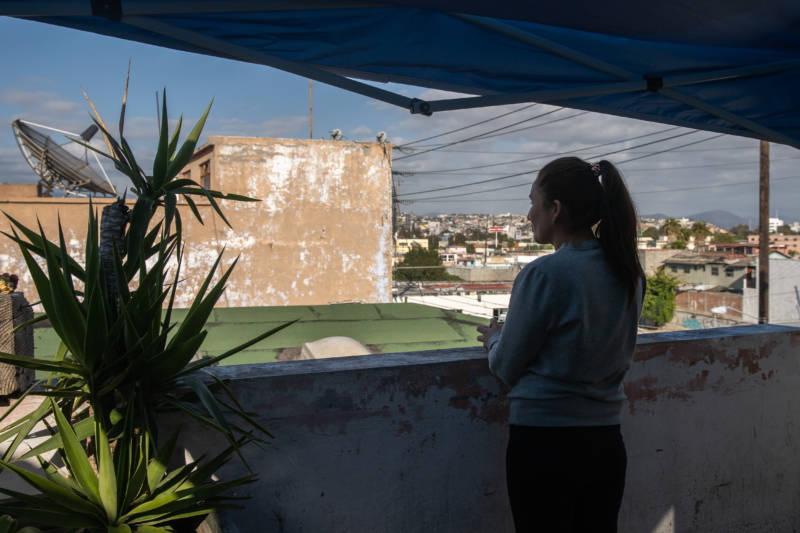
Carmen Lovo: Miscarriage in a Cell
Carmen Lovo, 34, from El Salvador (not her full name), said she was detained twice. She said she found out she was pregnant while she was held for three days in March the first time and suffered a miscarriage. She believes delayed access to medical attention played a role in the loss of her child.
Lovo said she told officers she was experiencing pain and asked to see a doctor, but she waited four hours to be assessed. An ambulance arrived around midnight, another five hours later, she said.
Lovo said she received no documentation of the hospital visit. She said she returned from the hospital to the port of entry with blood-stained pants, and was released in Tijuana the next day. Lovo said she planned to file a complaint but decided not to because she no longer had proof of the incident.
Two women told KQED they were detained in the same holding cell as Lovo and witnessed what she described.
Lovo also said CBP officers pressured asylum-seekers to sign documents when they refused to do so because they feared returning to Mexico.
“Even when you don’t want to sign, they make you sign,” Lovo said. “The officials told me, ‘You have to sign. Why are you crying?’ ‘Because I don’t want to return to Tijuana, because I’m scared.’
“They said, ‘If you don’t want to be here anymore …’ ” she added. “In the moment, you feel desperate because it’s hard to be locked up.”
CBP’s director of field operations in San Diego, Pete Flores, said officers never have asylum-seekers refuse to sign paperwork required for processing under the Migrant Protection Protocols, and if they did, an officer would simply note it.
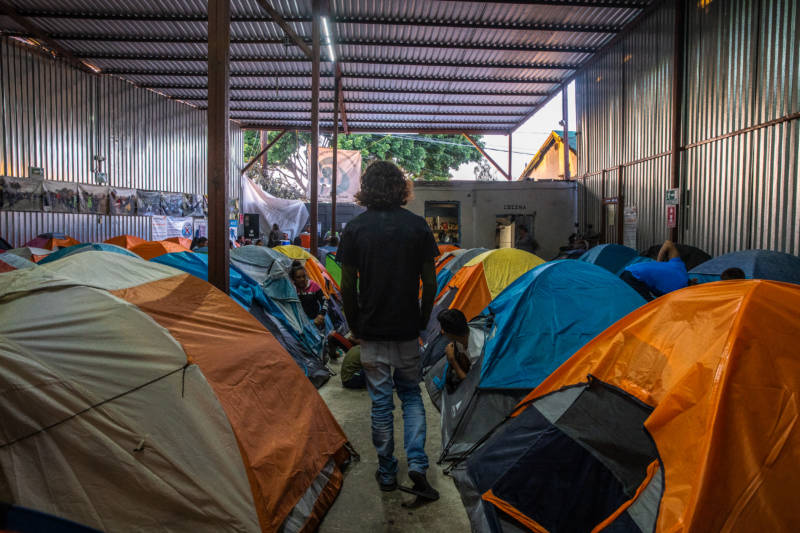
Kevin: ‘Maybe Asylum Isn’t Real’
Kevin, 20, from Honduras, said he got sick while in detention at the port of entry for 20 days. The first time, he thought he had the flu. Another time, it was a bad stomach ache and constipation.
At one point, a man in his cell started throwing up blood, he said, so Kevin and other migrants knocked on the door to summon help. After a while, an officer responded and administered an EKG, he said. Later, a second man began vomiting blood in a frightening episode, said Kevin.
Again, the detainees called for help, he said, and a different CBP agent came to the cell.
Kevin said she told the detainees she didn’t understand what they were saying. “She told me ‘No speak Spanish,’ ” Kevin said, but he added that he had heard her speak Spanish previously, and thought she wanted to avoid having to deal with a problem.
Another time, he says an immigration judge told him he would have an interview, but that he never did, and was simply sent back to Mexico.
“It’s weird, right? That they say one thing, and then it doesn’t happen. It’s like you lose hope. Maybe asylum isn’t real. Sometimes I wonder,” Kevin said.
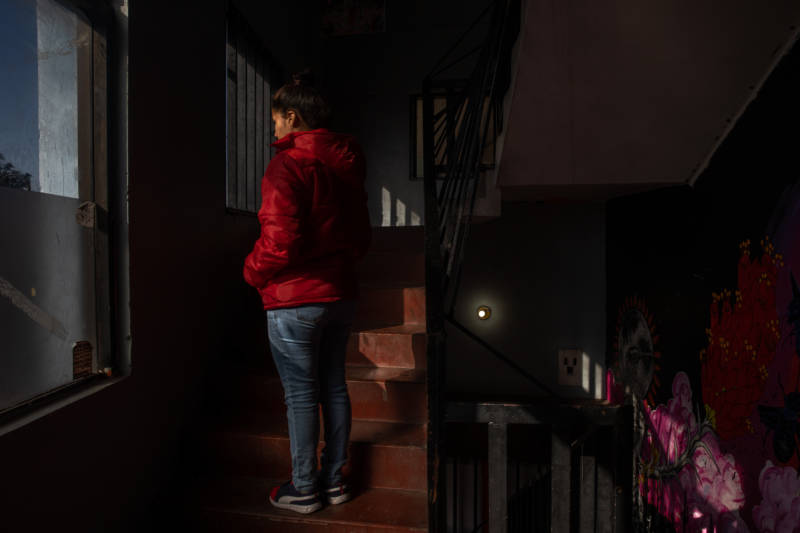
Adela: ‘You Sign or We Deport’
Adela, 32, said she lived alone in Honduras with her two children before coming to the port of entry. She said her kids got sick when they were detained.
The most recent time they were detained, she said her son became ill from the cold temperatures in the holding cell, which prevented him from sleeping. She said she and her 7-year-old daughter were held in a cell with many other women and children.
Adela said she could not sleep because there were so many people packed into the cell that there was only space to sleep sitting up on a bench. A woman who she estimated to be six to eight months pregnant slept beneath her on the floor, she said.
“We couldn’t lay down or even stand up,” Adela said. “You had to walk on the benches because the people couldn’t fit in there. I couldn’t sleep because everything is made of metal. It’s freezing.”
She also claimed that, during the first time she was detained, an officer pressured her into signing a form required for sending migrants back to await their asylum hearings in Mexico. Initially, a male officer who interviewed her noted that she refused to sign the document. Early the next morning, she said, a different officer retrieved her.
“She said ‘Sign.’ And I didn’t want to so she took me to a room. It was like an office. I’m not sure, but there was no one (else) there,” Adela said. “She yelled at me to sign. I cried. I didn’t want to sign. She said ‘Sign! I don’t have all day to be with here with you.’
“She talked to me really loudly. ‘You sign or we deport you to your country,’ she said. So I grabbed the pen and I signed,” she added.
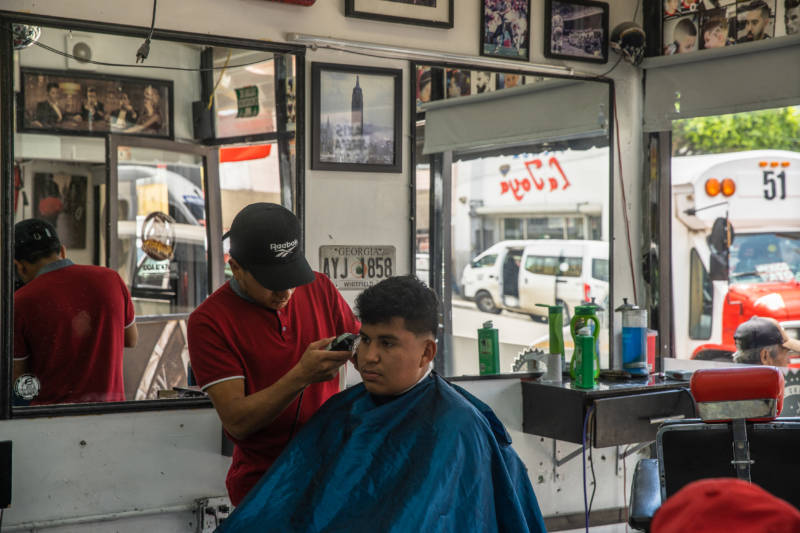
Gerson: Laughter and Song Among the Asylum-Seekers
Gerson, a 22-year-old from Honduras, said he was detained at the port of entry for 13 days following a hearing in immigration court. He is now working as a barber in Tijuana while he awaits his next hearing.
Gerson described being locked in a cell with migrants from all over the world, sometimes as many as 30 people. To pass the time, they would recall stories about their lives and tell jokes. Even if a punchline was lost to the language barrier, the other detainees would still laugh, he said, and sometimes, they would sing, too.
“One time I was singing and (an officer) told me to shut up and so we did,” Gerson said. “A little while later, we started to sing again and all of a sudden the officer grabbed my arm and twisted it and pushed me up against a wall. He said, ‘What did I tell you? I told you to shut up.’ I couldn’t say anything. I just kept quiet.”
CBP’s Challenges
From 2008 to 2018, the total number of asylum applications almost quadrupled.
San Ysidro’s Port Director Sidney Aki said that while CBP officers typically process unaccompanied migrant children in one day and families within three days, officers can’t always move detainees out of the facility as quickly as needed.
“In the past, what we have normally taken into custody were single individuals,” Aki said. “Now there’s this new era with regards to family units now being a good majority of what we take in.”
In a statement, a spokeswoman for CBP said the agency strives to process individuals as expeditiously as possible, and that most individuals are in custody for 72 hours or less.
“There are exceptions when a given individual may remain in CBP custody for a longer period of time for one of any number of reasons, such as the need to maintain family unity; availability of appropriate detention space in another facility; translation requirements, and more,” the spokeswoman said.
CBP also holds families and unaccompanied children for more time when Immigration and Customs Enforcement, which transports migrants to detention facilities, does not have enough space for them, according to CBP spokesman Ralph DeSio.
“If there are no openings with ICE, you can’t move them on,” DeSio said.
Most recently, from October 2018 to May 2019, the number of migrants deemed “inadmissible” at ports of entry along the southern border increased from 9,769 to 11,391 people, according to CBP data. (The term “inadmissible” includes people seeking “humanitarian protection under our laws,” according to the CBP website.)
While CBP tries to make San Ysidro’s holding cells as hospitable as possible, the purpose of the facility is to secure people, Aki said, adding that the agency only takes in a specific number of asylum-seekers for processing each day so that conditions and care are not compromised.
“If we overload individuals into our custody, there is a somewhat decrease in care provided to individuals,” Aki said. “Individuals may not get the proper checks and medical care, may not get fed in a timely manner … all those things happen when you’re overcrowded.”
